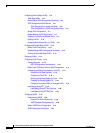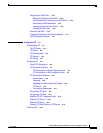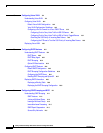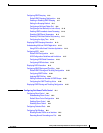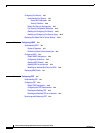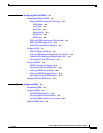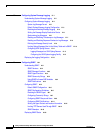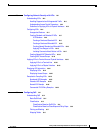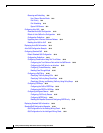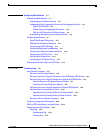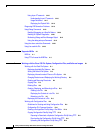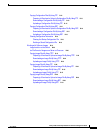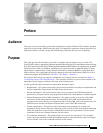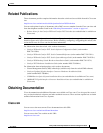
Contents
xxiv
Catalyst 2950 and Catalyst 2955 Switch Software Configuration Guide
78-11380-10
Queueing and Scheduling 30-8
How Class of Service Works 30-8
Port Priority 30-8
Port Scheduling 30-8
Egress CoS Queues 30-9
Configuring Auto-QoS 30-9
Generated Auto-QoS Configuration 30-10
Effects of Auto-QoS on the Configuration 30-13
Configuration Guidelines 30-13
Upgrading from a Previous Software Release 30-14
Enabling Auto-QoS for VoIP 30-14
Displaying Auto-QoS Information 30-15
Auto-QoS Configuration Example 30-16
Configuring Standard QoS 30-18
Default Standard QoS Configuration 30-18
Configuration Guidelines 30-19
Configuring Classification Using Port Trust States 30-20
Configuring the Trust State on Ports within the QoS Domain 30-20
Configuring the CoS Value for an Interface 30-23
Configuring Trusted Boundary 30-23
Enabling Pass-Through Mode 30-25
Configuring a QoS Policy 30-26
Classifying Traffic by Using ACLs 30-27
Classifying Traffic by Using Class Maps 30-30
Classifying, Policing, and Marking Traffic by Using Policy Maps 30-31
Configuring CoS Maps 30-34
Configuring the CoS-to-DSCP Map 30-35
Configuring the DSCP-to-CoS Map 30-36
Configuring the Egress Queues 30-37
Configuring CoS Priority Queues 30-37
Configuring WRR Priority 30-38
Enabling the Expedite Queue and Configuring WRR Priority 30-38
Displaying Standard QoS Information 30-39
Standard QoS Configuration Examples 30-39
QoS Configuration for the Existing Wiring Closet 30-40
QoS Configuration for the Intelligent Wiring Closet 30-41



